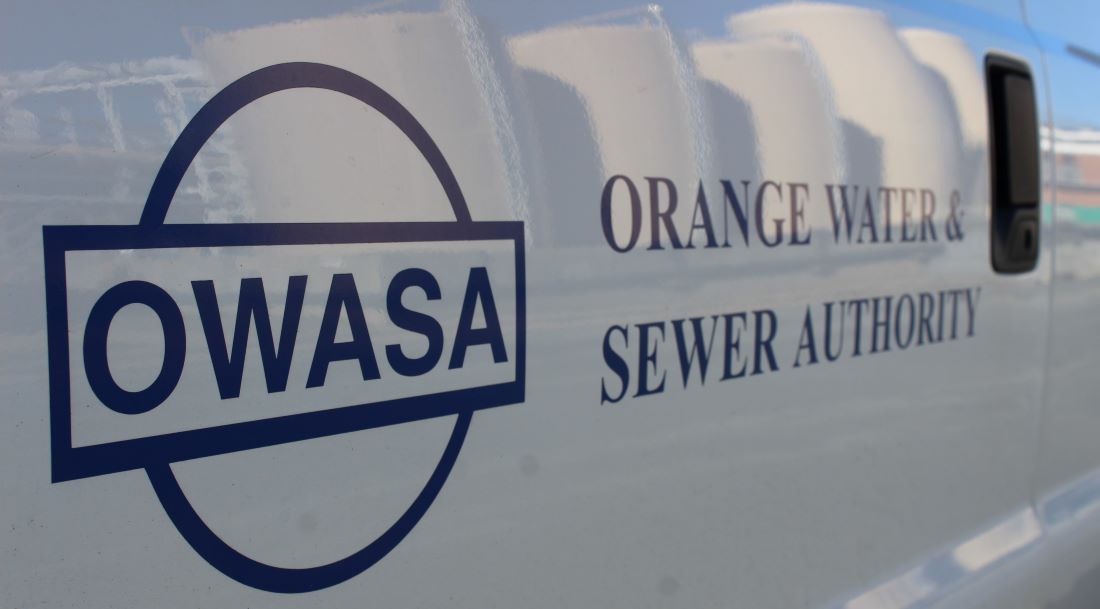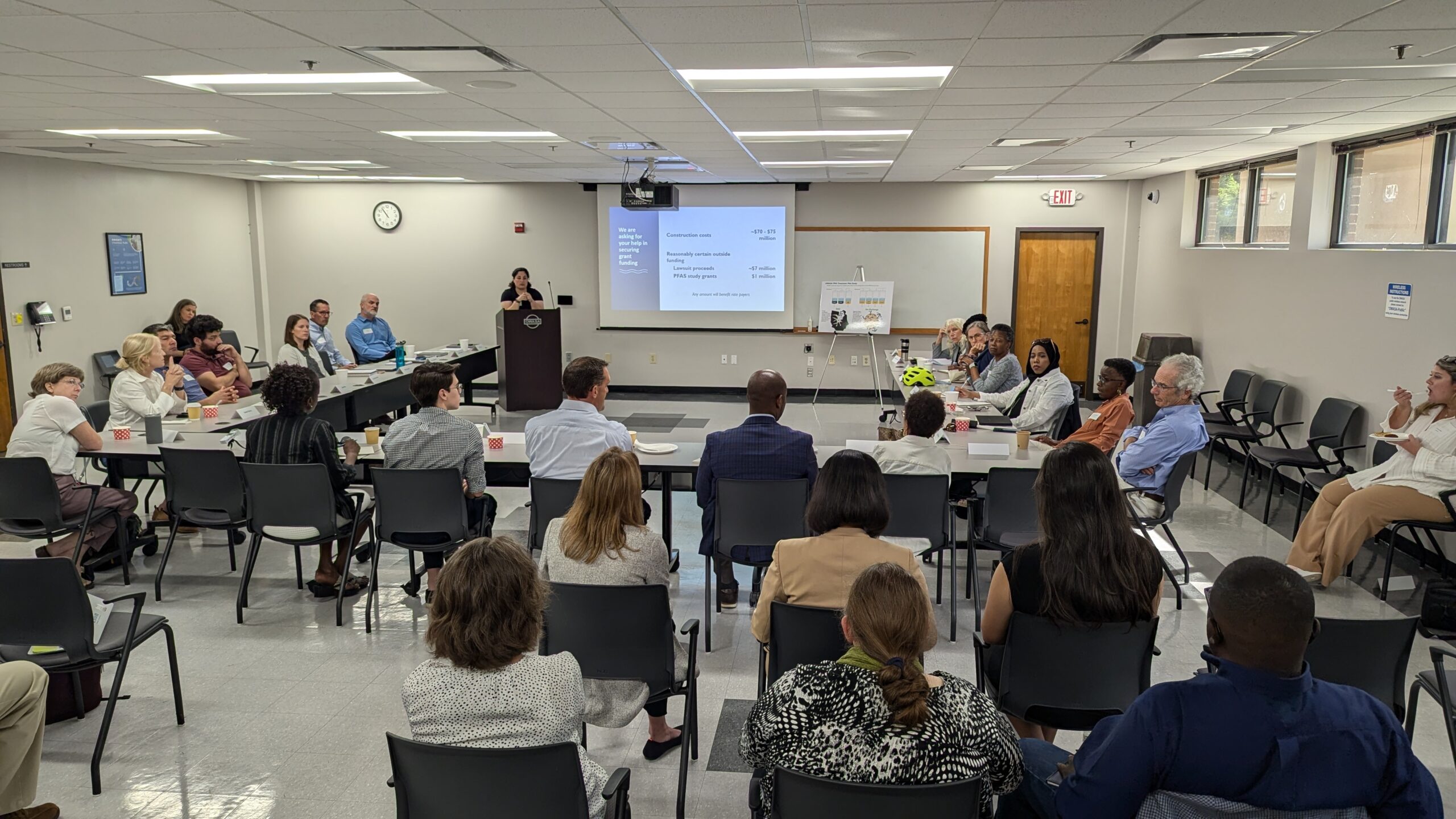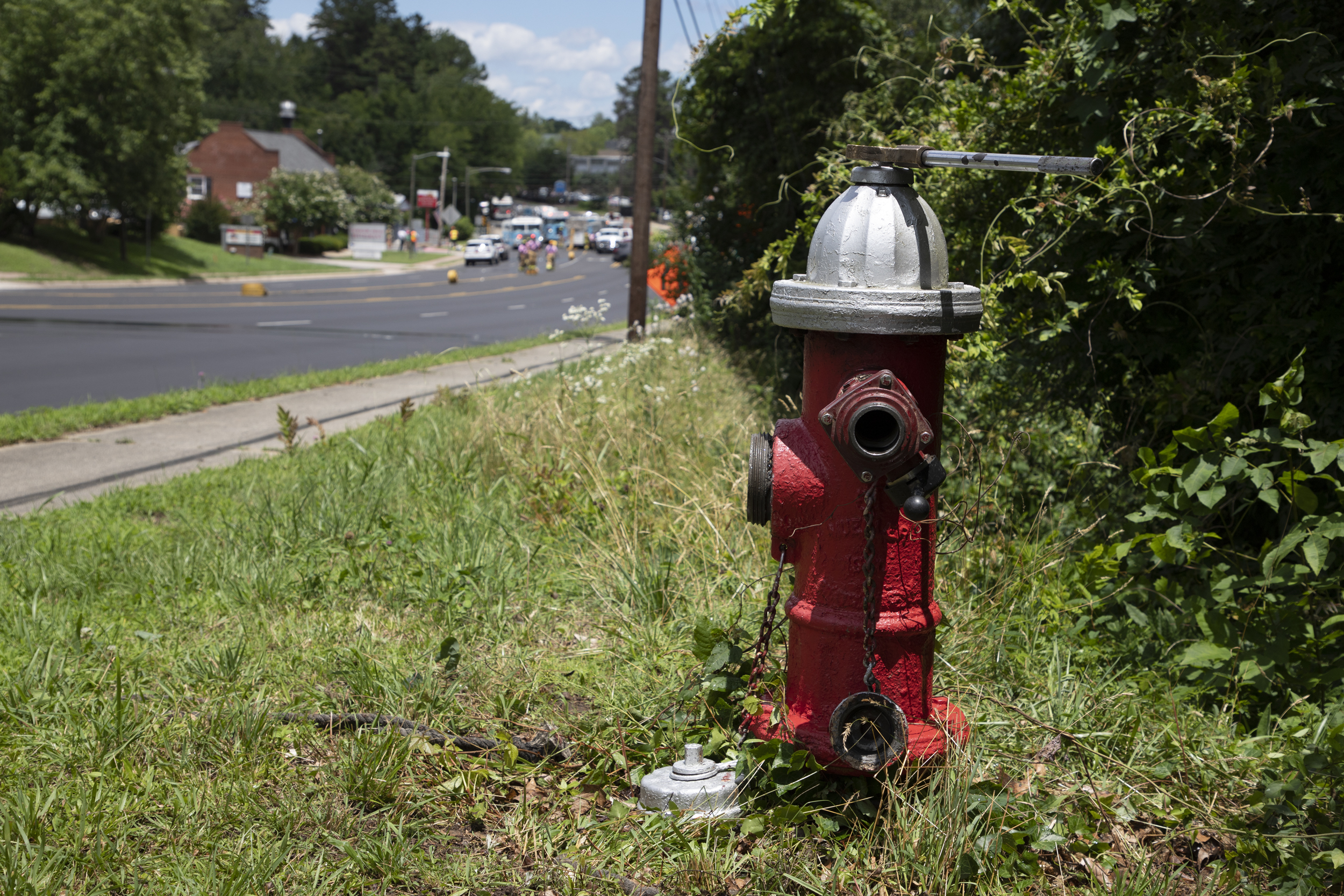The local town and county governments weren’t the only entities that just finished up their budget seasons ahead of the new fiscal year starting this weekend. The Orange Water and Sewer Authority, or OWASA, approved its own budget earlier this month – and it had some major changes from prior years.
The group’s Board of Directors approved OWASA’s roughly $58 million budget during its meeting on June 8 – with half dedicated to infrastructure upgrades and the other half used for maintenance and operations over the next year.
During a recent update to the Carrboro Town Council about the budget, OWASA Board Chair Bruce Boehm said the agency faces “a few challenges in the years ahead” which this plan begins to prepare for. Since OWASA is a non-profit exclusively funded by the rates and fees charged to residents for its water and sewer services, he said responsibility for funding of those changes largely falls to customers.
“The quantity of drinking water used by the community for the last several years is about the same as it was 30 years ago, even while the number of customers has grown by more than 80 percent in that time period,” said Boehm. “This remarkable achievement in water conservation is beneficial to the community in many ways. However, with large, fixed expenses, flat sales volume means that rates have to go up in order to pay for constantly increasing expenses and the need to invest in maintaining our infrastructure.”
The result is a 9 percent increase in monthly rates for OWASA customers during this fiscal year, with more increases planned over the next five years.
Director of Finance and Customer Service for OWASA Stephen Winters spoke with 97.9 The Hill in May about the rate increases. He said this is not an effect of OWASA halting late fees during the COVID-19 pandemic, but instead a reaction to a mix of longer-term and more recent issues. Winters identified inflation, supply chain slowdowns, and the need for new positions as affecting this year’s budget. But he also pointed to major infrastructure projects on the horizon.
“The Environmental Protection Agency recently issued new regulations regarding PFAS compounds in drinking water – some of the audience may have heard this referred to as ‘forever chemicals,’” said Winters. “The new EPA regulations essentially require us to remove all PFAS compounds from drinking water, and that was something that wasn’t predicted [in our budgets before this year.]
“For us at OWASA,” he continued, “this means investing an estimated $50 million in our drinking water treatment facility over the next five years.”
Executive Director Todd Taylor told the Carrboro Town Council the big estimate is partially because there’s no clear solution yet for eliminating PFAS. He confirmed that OWASA will try to eliminate as much as possible and will pilot test methods to explore the most effective water treatment. But Taylor indicated there’s no way around a big financial commitment to reach that mark.
“Currently, the analytical methods used to test for PFAS are very limited,” said Taylor. “The 26 compounds that are being tested for [are] a very small fraction of the PFAS that exists out there – there are thousands of these compounds.
“We certainly want to address PFAS,” he added. “We want to get it out of the water, but there’s a process that’s involved in actually doing that. We want to make sure we make the correct decision and, hopefully, only make the big investment one time.”
In addition to the upgrades to eliminate PFAS, there are several other OWASA projects that drove up customer rates. Winters said over the next five years, the agency will need to replace more than six miles of water lines and more than 15 miles of sewer lines. There’s also its ongoing initiative with Chatham County, Pittsboro and Durham called the Western Intake Partnership to explore how feasible a new, shared water intake and treatment plant is near Jordan Lake.
Taylor indicated that with these rate changes, OWASA is concerned about community members who may feel squeezed by the costs. While laws prevent the agency from metering any customers differently from others, he pointed to resources on OWASA’s website. For those looking to improve their water use, there are tips to help conserve and cut back. For those looking to help others who are behind on their payments, OWASA’s Care to Share program works with the Inter-Faith Council to help cover fees.
OWASA’s new schedule for rates, fees and service changes is set to go into effect on October 1.
Photo via Orange Water and Sewer Authority.
Chapelboro.com does not charge subscription fees, and you can directly support our efforts in local journalism here. Want more of what you see on Chapelboro? Let us bring free local news and community information to you by signing up for our biweekly newsletter.








